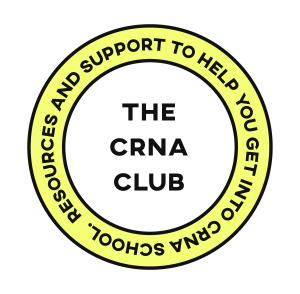Introduction: Your CRNA School Resume is CRUCIAL
Crafting the perfect resume or CV for your graduate school application is crucial, yet often overlooked. Your resume is one of the first impressions the admissions committee will have of you professionally. With application season right around the corner, now is the time to perfect your resume to showcase yourself in the best light to admissions committees.
Differentiating Between Resume and CV
While the terms "resume" and "CV" are sometimes used interchangeably, it's essential to understand the differences, especially in academic settings. A resume typically focuses on job-specific skills and experiences, while a CV (curriculum vitae) is more comprehensive and academically oriented. For CRNA school applications, the two terms are often used interchangeably, but the focus remains on highlighting relevant qualifications.
1. Using Overly Fancy Templates
One mistake I often see in nursing school resumes is using overly fancy or visually cluttered templates. Some applicants try to make their resumes stand out by using flashy fonts, graphs, images, or unusual layouts with multiple columns. While this may seem creative, it can actually backfire and make a negative impression on admissions faculty.
Faculty reviewers tend to prefer simple, clean, and professional resume formatting. Fancy templates can be confusing and difficult to read quickly. The most important thing is that your skills and experience are communicated clearly. Avoid anything that distracts from the actual content. Stick to basic horizontal formatting with simple section headers and bullet points.
Visual clutter like icons, flowcharts, and bold graphics tends to look unprofessional. Nursing is a relatively conservative field, so it's better to err on the side of traditional formatting. Keep it neat, organized, and easy-to-follow. You don't need to dazzle with visuals - impress them with your accomplishments and nursing expertise instead.
2. Including Irrelevant Information
A resume should highlight your most impactful and relevant skills, experience, and achievements. Many applicants make the mistake of including a lot of fluff or filler content that doesn't really showcase their qualifications.
For example, vague statements like "provided compassionate care" or "worked collaboratively" don't say much about your specific contributions. Every nurse provides care and collaborates with others. Focus instead on highlighting specialized skills, leadership roles, quality improvement projects, or measurable outcomes from your work.
Be ruthless in cutting any irrelevant or general statements. Admissions committees want to see the concrete ways you have added value, not just a list of routine nursing duties. Make sure each bullet point illustrates a skill, achievement, or qualification that strengthens your application.
Stick to the most important details that showcase your readiness for advanced practice. Don't dilute a strong resume with unnecessary filler statements that will distract rather than impress readers.
3. Not Using Reverse Chronological Order
The third mistake to avoid is failing to list your education and work experience in reverse chronological order. This means you always want to put your most recent experience and education first on your resume/CV.
For education, your most recent degree or certification should be listed first. If you recently completed a course or program, that should go before older degrees and certifications you've achieved. List in descending order from most recent to oldest.
The same logic applies to employment history. Your current or most recent position belongs at the top of your work experience section. Go backward in time from there, with your earliest jobs and internships at the bottom. Reverse chronological order allows reviewers to see your progression and where you are now first.
Using reverse chronological order makes it easy for admissions committees to scan your resume/CV quickly and understand your background. Failing to put your experience in this order can cost you, as key recent achievements may get buried or overlooked if they are not prominently highlighted
4. Don't Waste Space with a Massive Header
The header of your resume should only take up the necessary amount of space. You don't need your name to be extremely large - around 45 points is plenty big. While your name is important, it's more important to showcase your skills and experience on that prime first page real estate.
Be sure to include your credentials next to your name, such as RN, BSN, CCRN, CMC, etc. You worked hard for those credentials so make sure to list them! Admissions committees will be impressed to see those certifications right away.
Overall, keep your header concise with a reasonably sized name and your credentials. Then use the rest of the space on the first page to highlight your best attributes as a candidate.
5. Failure to highlight high acuity or critical care experiences
Tailor your work experience descriptions to reflect the high acuity or critical care aspects of your role. Use terminology consistent with the Council of Accreditation's definition to emphasize the complexity of your patient care experiences.
To recap, here are the 5 mistakes to avoid:
- Using overly designed templates: Avoid using fancy graphic designs or columnar templates that may distract from the content of your resume. Opt for a clean, traditional layout that prioritizes readability and professionalism.
- Overcrowding with unnecessary information: Streamline your resume by focusing on relevant experiences and avoiding unnecessary details or repetition. Each bullet point should convey essential information concisely.
- Not using reverse chronological order: Arrange your employment and education history in reverse chronological order, with the most recent experiences listed first. This format makes it easy for reviewers to see your most recent accomplishments upfront.
- Oversized headers and omission of credentials: Keep your header concise and professional, avoiding excessively large font sizes for your name. Ensure that you include relevant credentials, such as RN, BSN, or certifications, in your header to highlight your qualifications.
- Failure to highlight high acuity or critical care experiences: Tailor your work experience descriptions to reflect the high acuity or critical care aspects of your role. Use terminology consistent with the Council of Accreditation's definition to emphasize the complexity of your patient care experiences.
Conclusion and Actionable Steps
Crafting a standout resume is essential for CRNA school applicants to showcase their qualifications effectively. By avoiding common mistakes and focusing on clarity, professionalism, and relevance, you can create a compelling resume that strengthens your application. Start early, pay attention to detail, and use these tips to ensure that your resume stands out to admissions committees.
Did you know we have CRNA school-specific resume templates in our Shop? You can check that out here!


